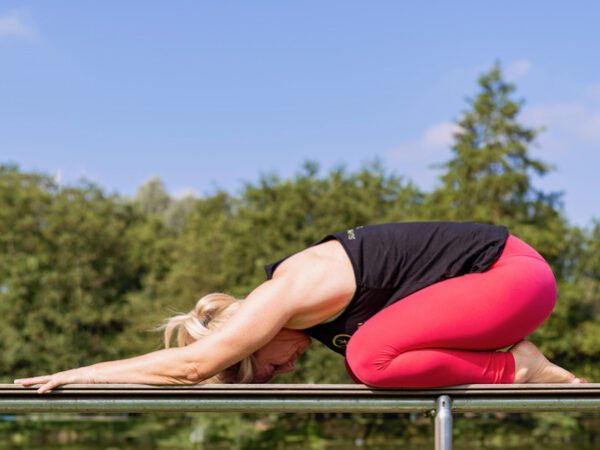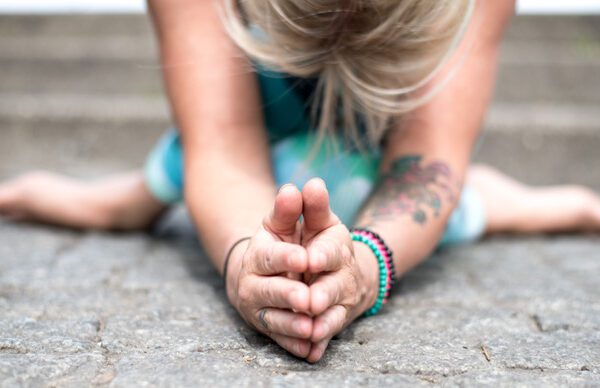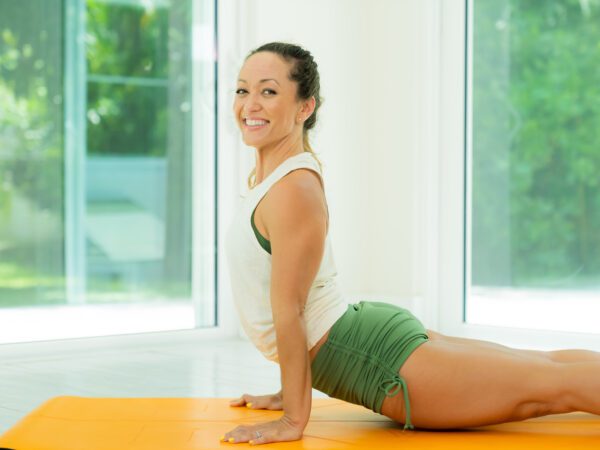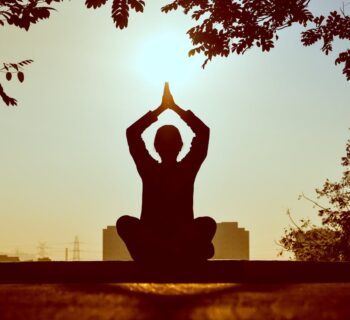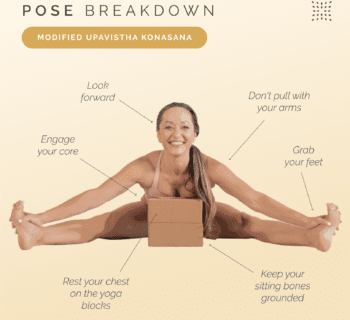You’re on the mat, arms outstretched, heart open, eyes closed. You feel a wave of frustration as the pose that you’ve struggled to get still seems out of reach. Emotions rise as you look around and feel like everyone else, but you can get it. With these feelings comes a sense of anxiety as you approach the mat. Why does this happen? Why won’t your hips open? Why aren’t you strong enough? Why can’t you balance? Why?
This is exactly when it is most important to let go of the outcome.
Embracing the concept of nonattachment can revolutionize not only your practice on the mat but also the serenity and satisfaction in your daily life. When you release expectations, you’ll be able to observe a shift within you. Once you let go of your attachment to the outcome, you’ll experience a freedom and joy that will push away worldly concerns.
Embracing Nonattachment in Yoga
In yoga, the journey surpasses the destination, weaving a narrative of self-awareness rather than definitive milestones. Nonattachment teaches us to appreciate our practice as a fluid experience, defined not by the perfect pose but by the awareness and growth that occur as we move, breathe, and exist. Through nonattachment, we liberate ourselves from the binds of perfectionism, allowing our practice to manifest in its truest form, free from undue pressure. Once we let go of the thoughts and frustrations that come with not “achieving” our “goals” we can appreciate the practice for what it is, a practice—not a competition.
As we continually refine our understanding of nonattachment, we realize it’s akin to a gentle exhale—a release of clinging to the expected outcomes of our yoga journey. Think of it as an invitation to dance with the present moment, devoid of the burden of past triumphs or future achievements. In doing so, we open ourselves to the joy and freedom inherent in being wholly present, fostering a more profound connection with ourselves and deepening our relationships with people around us, increasing our capacity for happiness in daily life.
Cultivating Mindfulness Through Release
Mindfulness on the mat is a symbiosis of intention and surrender; we set our aims without tethering ourselves to their fruition. This conscious detachment clears the path for a richer, more serene practice, allowing us to experience each asana with fresh perception and grace.
Nonattachment is different from apathy and indifference in its underlying philosophy and approach. While apathy and indifference involve a lack of interest, concern, or emotional investment, the Buddhist concept of nonattachment is a practice rooted in mindfulness and awareness.
In the stillness between breaths, we encounter the essence of “letting go”. This practice on the mat seeps into our daily existence, teaching us the power of presence over possession, of being rather than having.
Enlightenment often blooms in the fertile soil of nonattachment.
Mindful release engenders a profound joy: as we unshackle from expectations, a spontaneity emerges that elevates both practice and practitioner (fostering an inner environment where creativity and peace can flourish). This cultivation of nonattachment sparks a transformation that deeply enriches not just yoga but every facet of life.
The Balance of Effort and Surrender
Yoga is a dance—a delicate balance between the assertive push of effort and the gentle embrace of surrender.
-
Recognize your limits: Understand and develop an appreciation for the boundaries of your physical and mental stamina.
-
Apply effort mindfully: Engage in each asana with purpose, focus, and intention.
-
Embrace imperfection: Accept that not every pose will look the same every day or for every yogi.
-
Release expectations: Let go of the outcomes and cherish the journey of the practice.
-
Breathe into surrender: Use your breath as a tool to release tension, giving you space to surrender into postures.In letting go of attachment to the perfect pose, we find the true spirit of yoga.
The interplay between effort and surrender teaches us patience and resilience, echoing in all corners of life.
Beyond the Pose: Life Lessons from the Mat
Yoga transcends the boundaries of the mat and affects our behavior in daily life.
Tailoring ancient wisdom into our contemporary fabric, yoga’s essence goes beyond physical postures. It instills a profound philosophy of nonattachment—aparigraha in Sanskrit—exhorting us to let go of attachments and outcomes, bringing a profound level of serenity to our daily existence. Consequently, living yogic values off the mat creates a transformative lifestyle resonating with depth and purpose.
Negate attachment to transitory states of achievement.
An ingrained perfectionism often guides life’s pursuits; on the yoga mat, this can manifest as fixation on mastering asanas. Yet, when we release this tension – when we stop holding our breath for the perfect alignment or the most serene meditation experience – we open ourselves to a richer, non-competitive journey of self-discovery.
Savor the experience, not just the achievement.
What we learn in our practice is invaluable for navigating life’s complexities and challenges—adopting nonattachment nurtures equanimity amidst fluctuating circumstances, enhancing our happiness and well-being as we flow through life with grace and poise. This liberating philosophy empowers us to gracefully accept change, fostering contentment and growth beyond the boundaries of the yoga studio.
Letting Go of Perfection
Perfection on the yoga mat is an elusive goal, an illusion that binds us to unnecessary pressure and stifles our capacity for joy. When we soften this insistence, embracing each stumble and misalignment as part of the process, we cultivate patience and resilience—qualities that enhance our practice and enrich our lives beyond measure.
Shifting our focus from perfection to presence allows the subtle textures of our yoga experience to emerge, revealing layers of personal insight and connection. This shift cultivates a practice steeped in authenticity rather than performance, inviting a profound contentment that transcends the yoga mat.
Accepting Imperfection in Practice
In the sanctuary of the yoga studio, the perfect asana is not the end goal; it is the path of exploration and self-discovery that holds intrinsic value. Embracing each wobble and waiver as an important part of your growth fosters a sense of patience with your practice and with yourself.
Indeed, by acknowledging and accepting that the journey is riddled with imperfections, we expand our understanding of progress. We learn that the depth of a pose is not measured by its outward appearance, but by the internal experience it evokes. Each time we step onto the mat, we’re invited to delve into this rich sensory and emotional landscape, celebrating the triumphs and learning from the challenges.
Reflection and acceptance become powerful tools within your practice. When we release the notion of a ‘perfect’ practice, we open ourselves to the profound wisdom inherent in each movement. The attention then shifts from how the pose looks to how it feels, affirming the practice as a journey of embodiment and personal alignment rather than a physical destination.
Ultimately, nonattachment to perfection sews the seeds for a more joyous and enduring relationship with yoga. If we can carry this understanding off the mat, applying it to our everyday interactions and self-expectations, we cultivate a life infused with kindness and flexibility. This philosophical nimbleness allows us to meet life’s serendipitous twists with a measure of grace, embracing the imperfect beauty of the human experience.
Growth Through Gentle Persistence
Progression in yoga is less about speed and more rooted in the resilience of one’s spirit and the steady honing of practice. The depth of any posture unveils itself through consistent effort, revealing layers of strength and understanding.
Slow and steady nurtures both body and mind. Within this framework, every breath is a step forward.
The path of growth in yoga is often nonlinear, marked by ebbs and flows akin to the rhythms of nature. This landscape of practice rewards those who persist gently, acknowledging that a plateau today might be the foundation for tomorrow’s breakthrough.
Recognizing that true advancement on the mat is measured not by the complexity of a pose but by the attunement to one’s breath and inner sensation, we foster a sustainable practice. It becomes a lifelong journey, where the concept of “achievement” transforms into a continuous unfolding of presence and self-awareness.
Nonattachment to Outcomes
In yogic philosophy, nonattachment, or aparigraha, invites us to detach from a fixation on results, fostering inner peace and contentment. When your practice includes nonattachment, you align with the core of yoga — presence. This lifts the weight of expectation, unveiling freedom within you to explore movements and breath without the pressure of a predefined goal or perfect pose.
By surrendering to the process rather than the end state, we cultivate a “witness mindset”. Rather than being a slave to the whims of our desires or frustrations, we learn to observe them without getting entangled. On the mat, this translates to connecting with the current posture, not the one we wish to achieve. In daily life, embracing nonattachment can lead to a more serene and contented existence, liberating us from the chains of outcomes we cannot always control.
Posture Progress Without Pressure
Embrace your practice with a light heart, allowing postures to evolve naturally without the burden of expectation.
-
Understand that physical flexibility varies day-to-day
-
Recognize the importance of consistency over intensity
-
Celebrate small victories on the mat without attachment to perfection
-
Cultivate patience and observe the gradual unfolding of your practice
Freed from the shackles of anticipation, your body and mind coordinate in a harmonious dance of growth.
Through nonattachment, the journey becomes the destination, filled with lessons and joys that far surpass the allure of any final pose.
Finding Peace in Unpredictability
Life is an ever-changing mosaic of moments.
Within the tapestry of our experiences, it’s natural to seek stability. We weave expectations into our daily fabric, hoping to predict outcomes and foster a sense of control. However, when we anchor ourselves to the art of nonattachment, the unpredictable currents of life become less daunting. Embracing the ebb and flow of existence, nonattachment offers a tranquil harbor.
Uncertainty can be an invitation to growth and renewal.
When we release the need for certainty, we open ourselves to new possibilities. This doesn’t mean abandoning goals, but rather approaching them with a mindset open to change—allowing progress to be redefined, reconfigured, and truly savored on its own terms.
And thus, nonattachment becomes a beacon of resilience.
As we journey through the undulating waves of life, nonattachment illuminates our path, showing the way to peace amidst the storms. It reminds us that outcomes aren’t the sole purveyors of joy—often, it is the precious knowledge gleaned along the way that enriches us most deeply.
Integrating Nonattachment Daily
In daily life, nonattachment manifests as a liberating philosophy, one that encourages us to engage with the world without clinging too tightly to our desires or fears. By consciously choosing to view each experience as fleeting, we cultivate an internal space of freedom. This mental shift allows us to partake in life’s myriad offerings with a sense of curiosity and openness, unburdened by the weighty expectation of specific outcomes. Just as a leaf allows the wind to carry it without resistance, embracing nonattachment daily enhances our capacity to move gracefully through the ever-shifting landscapes of our lives, finding happiness in the journey, not just the destination.
Mindful Responses to Daily Stressors
Daily stressors are inevitable, but how we respond can transform our experience of them.
-
Pause and Breathe: Before reacting, take a deep breath to center your mind.
-
Observe Without Judgment: Notice your stressor without labeling it as ‘good’ or ‘bad’.
-
Release Control: Acknowledge what is in your power to change and what is not.
-
Reflect on Impermanence: Remind yourself that this stressor, like all things, will pass.
-
Choose Compassion: Extend the same kindness to yourself that you would to a dear friend.
These steps can recalibrate your reaction from reflexive to reflective.
By adopting a stance of nonattachment, we foster resilience in the face of life’s challenges.
Joyful Living Through Present Focus
Our present moment holds infinite potential for joy and contentment. When we focus on the “now”, life’s simplicity can be truly appreciated.
By concentrating on the present, we experience life’s richness in real time. This is the essence of true mindfulness.
A concentrated effort to stay in the moment can free us from the heavy chains of past regrets and future anxieties, offering a lighter way to navigate our existence. As we cultivate this practice, our daily activities become infused with a deeper sense of presence and enjoyment.
The art of being fully present is a transformative experience that opens us up to the subtle joys of life. When we let go of attachment to specific outcomes, we create space for life’s serendipities to unfold. This gentle release allows us to embrace an organic flow of experiences, enriching our lives with unexpected discoveries and authentic happiness.
Photo by Christopher Sardegna on Unsplash



